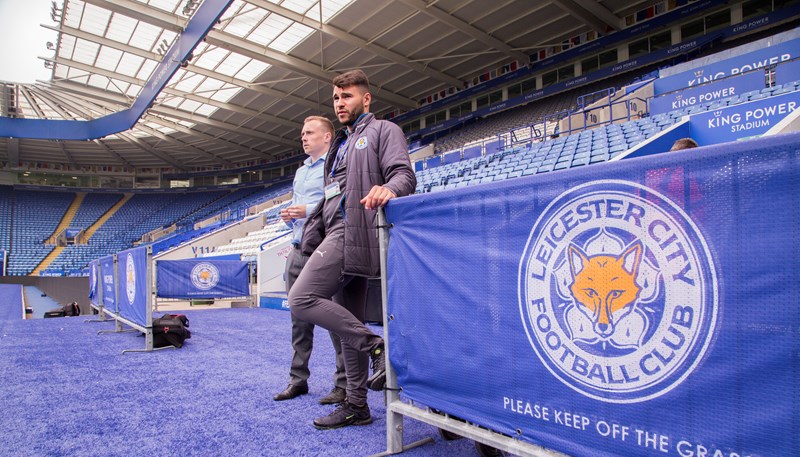Sponsorships can be a vital source of revenue for your sports broadcasting 스포츠중계 channel, helping you enhance content quality, expand your reach, and engage more viewers. In this guide, we will explore actionable strategies to attract and secure sponsorships effectively.
Understanding Sponsorships in Sports Broadcasting
Sponsorship in sports broadcasting refers to the financial or material support provided by brands to sports media channels in exchange for advertising space, brand exposure, and other promotional benefits. Companies seek sponsorships to reach their target audiences through engaging content.
Why Sponsorships Matter
- Financial Support: Sponsorships provide the funds needed to produce high-quality content.
- Brand Partnerships: Collaborating with established brands can enhance your channel’s credibility.
- Audience Growth: Sponsors often help promote your content, reaching new audiences.
Identifying Potential Sponsors
Finding the right sponsors is crucial for successful partnerships. Here’s how to identify them:
1. Research Relevant Brands
Start by researching brands that align with your channel’s niche. For example:
- Sports Equipment Companies: Brands selling gear relevant to the sports you cover.
- Beverage Brands: Energy drinks or sports beverages looking to reach active audiences.
- Local Businesses: Restaurants, gyms, and shops that want to promote to local sports fans.
2. Analyze Your Audience
Understanding your audience demographics will help you identify which brands may be interested in sponsoring your channel. Key data to collect includes:
- Age Range: What age group primarily watches your channel?
- Gender: Is your audience predominantly male or female?
- Interests: What other interests does your audience have outside of sports?
3. Review Competitor Sponsorships
Analyze your competitors’ sponsorships to identify potential partners. Look at:
- Who are their sponsors?
- What type of content do they create with their sponsors?
- How do they promote these partnerships?
Building a Strong Proposal
Once you’ve identified potential sponsors, you need to create a compelling proposal to attract their interest.
1. Create a Media Kit
A media kit is a document that showcases your channel’s value to potential sponsors. It should include:
- Channel Overview: Brief information about your channel, including its mission and vision.
- Audience Insights: Demographics, viewing habits, and engagement statistics.
- Content Highlights: Showcase your most successful episodes or segments.
- Sponsorship Opportunities: Clear descriptions of available sponsorship packages.
2. Define Sponsorship Packages
Offer various sponsorship packages to cater to different budgets and needs. Common packages include:
- Title Sponsorship: The sponsor’s name appears prominently in the channel title or episode titles.
- Segment Sponsorship: The sponsor supports a specific segment of your show.
- Product Placement: Integrating the sponsor’s product into your content.
3. Include Testimonials and Case Studies
If you’ve previously worked with sponsors, include testimonials and case studies that demonstrate successful partnerships. Highlight metrics such as:
- Increased Viewership: Showcase how sponsorship has increased audience engagement.
- Brand Reach: Provide data on how sponsors’ brands have been exposed to your audience.
Crafting an Effective Outreach Strategy
Once your proposal is ready, you need to effectively reach out to potential sponsors.
1. Personalize Your Outreach
When reaching out to potential sponsors, personalize your communication. This can include:
- Using Their Name: Address the person by their name in emails.
- Referring to Their Products: Mention their products in your outreach, showing that you value their brand.
2. Utilize Multiple Channels
Engage potential sponsors through various channels:
- Email Campaigns: Send targeted emails with your proposal attached.
- Social Media: Engage with brands on platforms like Twitter, Instagram, or LinkedIn.
- Networking Events: Attend industry events to meet potential sponsors face-to-face.
3. Follow Up
If you don’t hear back, send a polite follow-up email after a week. Be persistent but respectful, as sponsors often receive many proposals.
Negotiating Sponsorship Deals
Once you attract interest, it’s time to negotiate terms that benefit both parties.
1. Discuss Terms Clearly
Ensure both parties understand the expectations and deliverables. Key points to cover include:
- Payment Terms: Discuss how and when payments will be made.
- Content Requirements: Specify what content the sponsor expects from you.
2. Draft a Contract
Once terms are agreed upon, create a contract outlining the partnership’s details. Essential elements include:
- Duration of the Sponsorship: How long will the partnership last?
- Termination Clause: Conditions under which either party can terminate the agreement.
- Confidentiality: Protect sensitive information shared during the partnership.
Delivering on Your Sponsorship
After securing a sponsorship, focus on delivering value to your sponsor.
1. Create Quality Content
Ensure the content you produce meets the expectations set during negotiations. Maintain high production values and relevance to the sponsor’s brand.
2. Promote the Sponsorship
Actively promote the sponsorship through various channels:
- Social Media Posts: Regularly mention the sponsor in your social media content.
- On-Air Mentions: Incorporate mentions of the sponsor in your broadcasts.
- Special Promotions: Create contests or promotions that feature the sponsor’s products.
3. Measure Success
Track metrics that demonstrate the effectiveness of the sponsorship, including:
- Viewership Statistics: Analyze how sponsorship affects viewer numbers.
- Audience Engagement: Measure engagement levels through comments, shares, and likes.
4. Provide Feedback to Sponsors
Share success metrics with sponsors after the partnership ends. This transparency builds trust and can lead to future opportunities.
Building Long-Term Relationships
The goal is not only to secure sponsorships but also to build long-term relationships with brands.
1. Maintain Communication
Keep an open line of communication with sponsors even after the contract ends. Regular updates on your channel’s progress can keep them interested.
2. Seek Feedback
Ask sponsors for feedback on the partnership. Understanding their perspective can help improve future collaborations.
3. Propose Renewals
As the sponsorship period comes to an end, discuss renewing the partnership. Highlight the successes achieved together to encourage them to continue the relationship.
Conclusion
Securing sponsorships for your sports broadcasting channel requires a strategic approach that combines research, relationship-building, and effective communication. By identifying the right sponsors, crafting compelling proposals, and delivering exceptional value, we can create partnerships that benefit both our channels and the brands we work with.
This flowchart illustrates the key steps in the sponsorship process, emphasizing the importance of each stage from identification to relationship building.
By following these strategies, you can successfully secure sponsorships that not only support your channel but also enhance your brand’s presence in the sports broadcasting industry.





